What's the deal with airplane food? I went to Atlanta to find out | Cruising Altitude
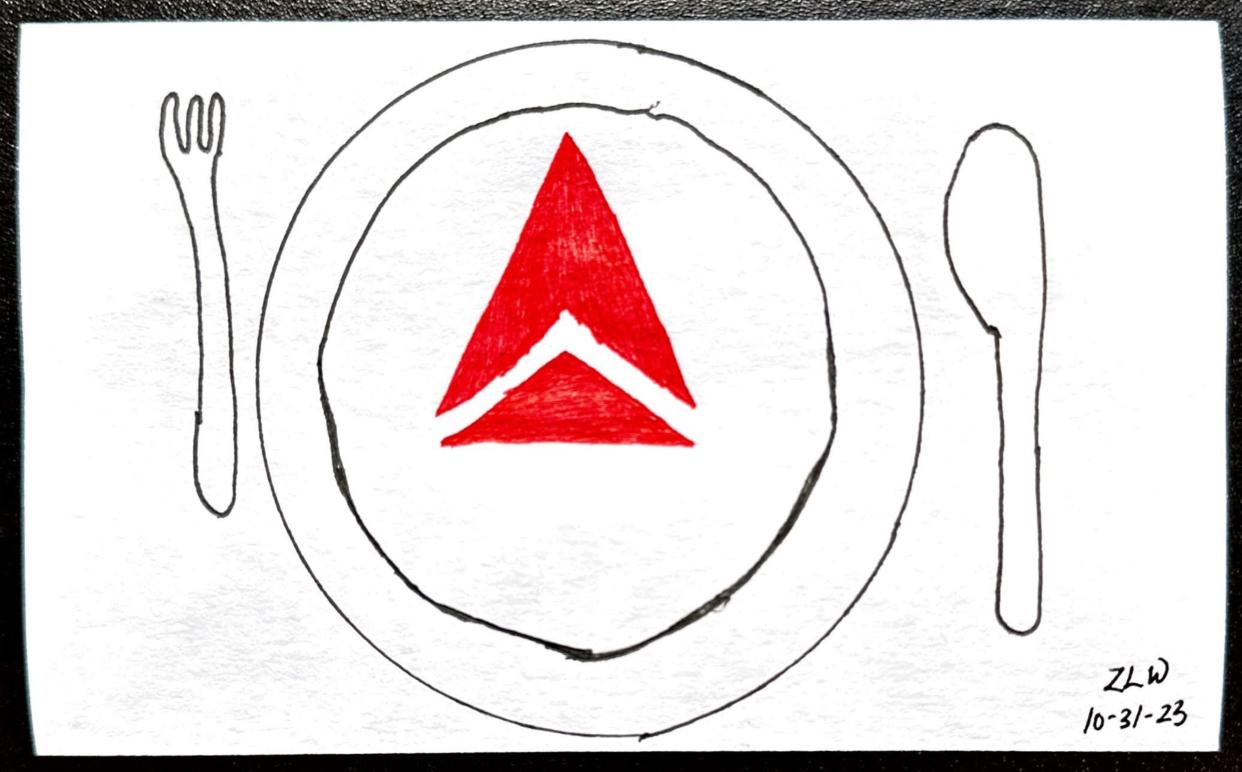
People often say you don’t want to see how the sausage is made. I beg to differ.
I recently had a chance to try a bunch of Delta Air Lines’ new first-class food at their headquarters in Atlanta, and while I was down there as a guest of the airline, they took the opportunity to show me around their domestic flight kitchen.
I’m here to tell you what’s really up with airline food. Delta and other airlines spend a lot of time thinking about their menus. As I savored the shrimp and grits (please don’t tell my rabbi), I kept asking Delta’s people why everyone still has a perception that airplane food is bad. I was met with a series of shrugs and more food.
“The thing that people don’t necessarily realize is the amount of work that goes into every aspect of it from the menu planning and how we select ingredients or how we choose partners all the way through sourcing and delivery and all the execution in the kitchen,” Mike Henny, Delta’s managing director of onboard service operations, told me “Either they have an overly simplified view of it or they just don't realize the volumes that we’re dealing with.”
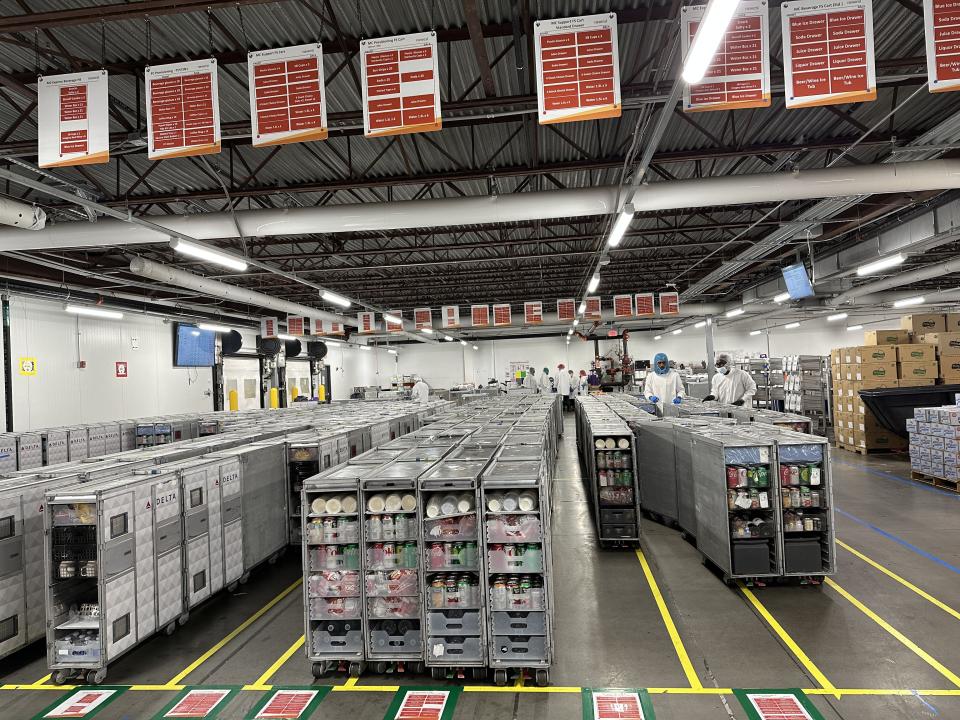
And that volume is no joke.
The 120,000-square-foot facility I saw in Atlanta is owned by Delta and managed by Newrest Catering. It produces about 6,800 meals per day, including hot and cold options for travelers, crew meals and food for its own commissary. The inflight meals produced in Atlanta are only served on flights originating there, as well as an onward or return leg when the plane is heading somewhere that doesn’t have its own catering facilities. The domestic flight kitchen alone, one of four catering facilities at the Atlanta airport, stocks about 350 flights per day.
“The design of a facility like this, especially when you’re starting more or less from scratch, is all geared toward optimizing the flow of product in and out of the building,” Henny said. “It’s really about as optimized as it can be.”
Here’s what that optimization looks like in three steps:
1. Not your typical hand wash, clean up
It starts with every employee going through the hygiene room, which involves an air blast chamber that poofs the dust off your protective garments and then finishes with a three-step hand washing and sanitizing station.
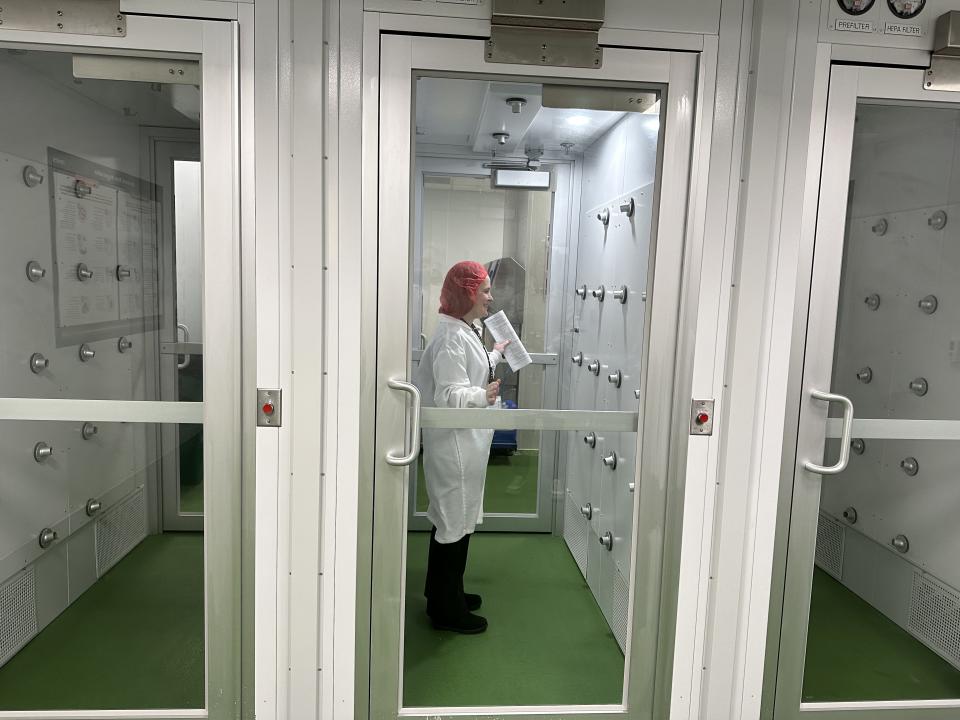
After every flight, all the food and beverage carts are offloaded from the plane. They come back to the kitchen and get emptied. Full cans and bottles from the beverage carts and unopened packaged food are sorted out and reloaded for later flights.
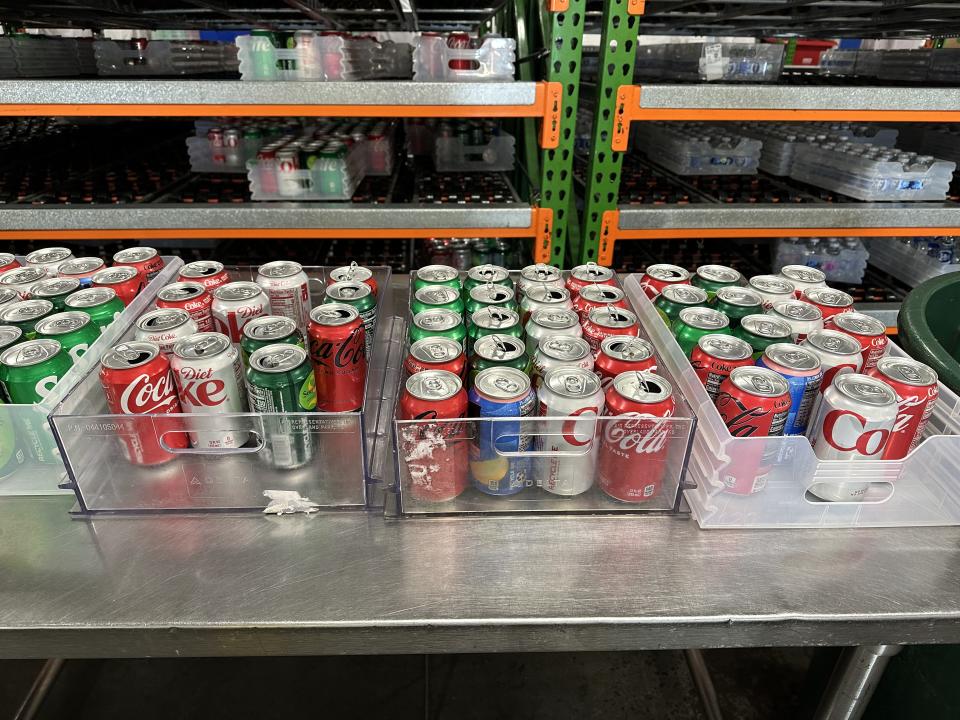
Everything else, from half-finished soda cans to food waste, is disposed of. Even ice is melted down and not reused. Delta works hard to recycle as much as possible, and food waste is liquefied for disposal.
The carts themselves, between 3,000 and 4,000 a day, are washed and inspected for damage after every flight before being moved on for reloading. Damaged carts are tagged and sent off for repair.
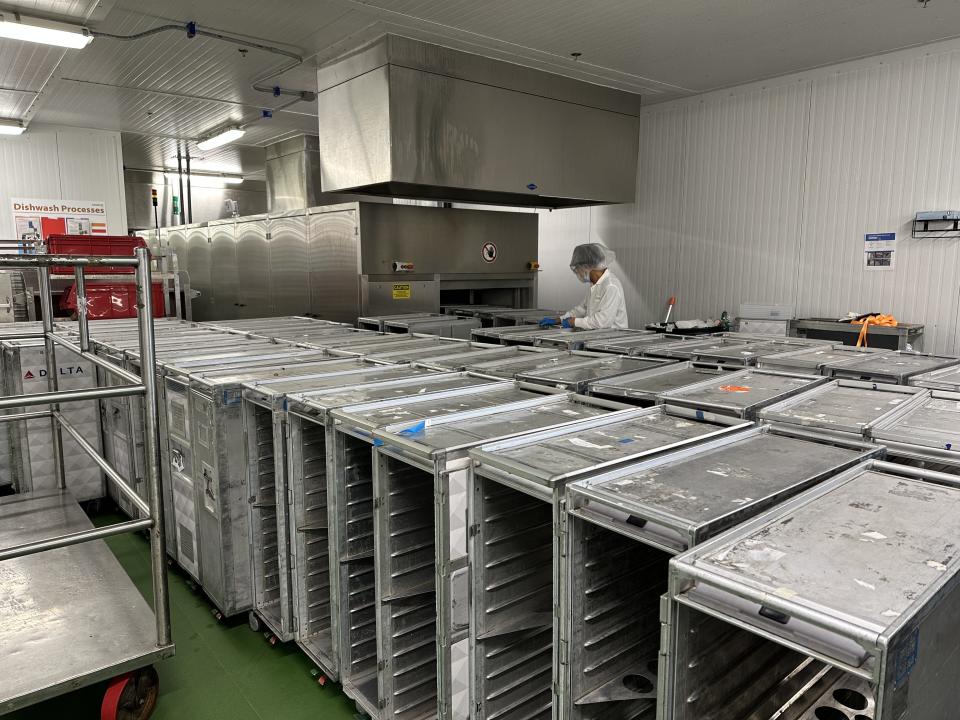
2. Assessing how much food each plane gets
Next, we saw how beverage carts are loaded, and the thing that surprised me most was the relatively low volume of products in the carts. For planes that carry over 100 people, I was expecting to see more cans of soda and beer, more bottles of wine and miniature liquor than I did, but Delta’s catering pros assured me that they’ve analyzed what’s best to stock on every flight. They don’t want to fly too much extra stuff around because that means more weight on the plane, which translates to more fuel burn, but they also don’t want to run out of a passengers’ preference.
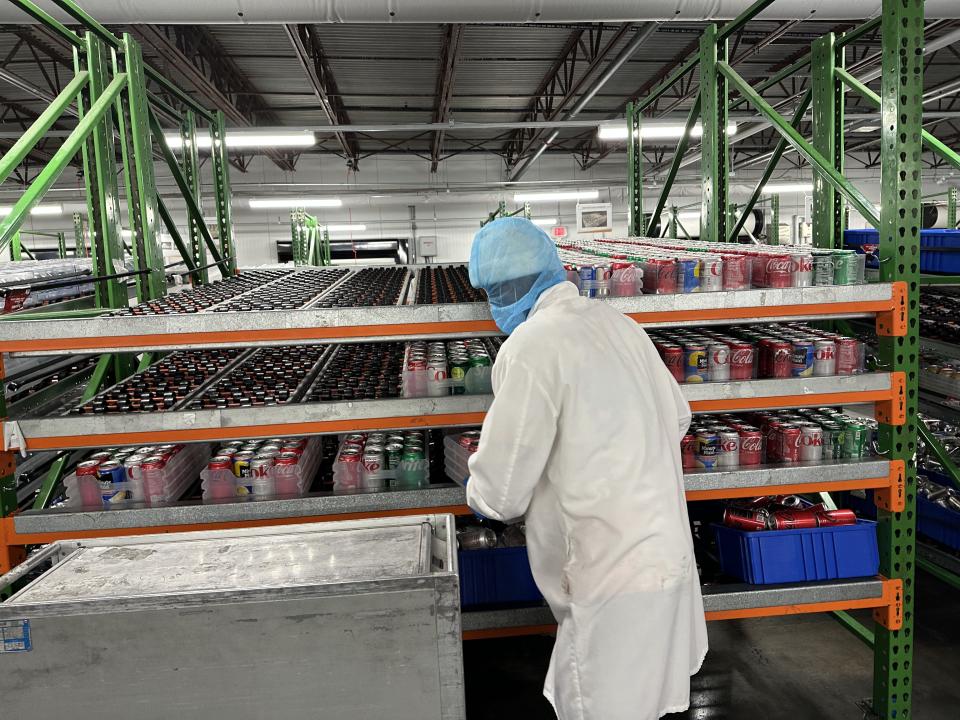
A typical Boeing 737-800, which carries 160 passengers, will be loaded with 176 packages of Biscoff cookies, 50 cans each of Coke and Diet Coke, 36 mini Woodford whiskeys, 18 Miller Lites and 83 eight-ounce water bottles, among other provisions. I always assumed there would have to be at least one can of Coke per passenger.
Both beverage and food carts go through quality control and security checks before being loaded onto the plane. Damaged items like bent soda cans or less-than-presentable foods are taken off and replaced.
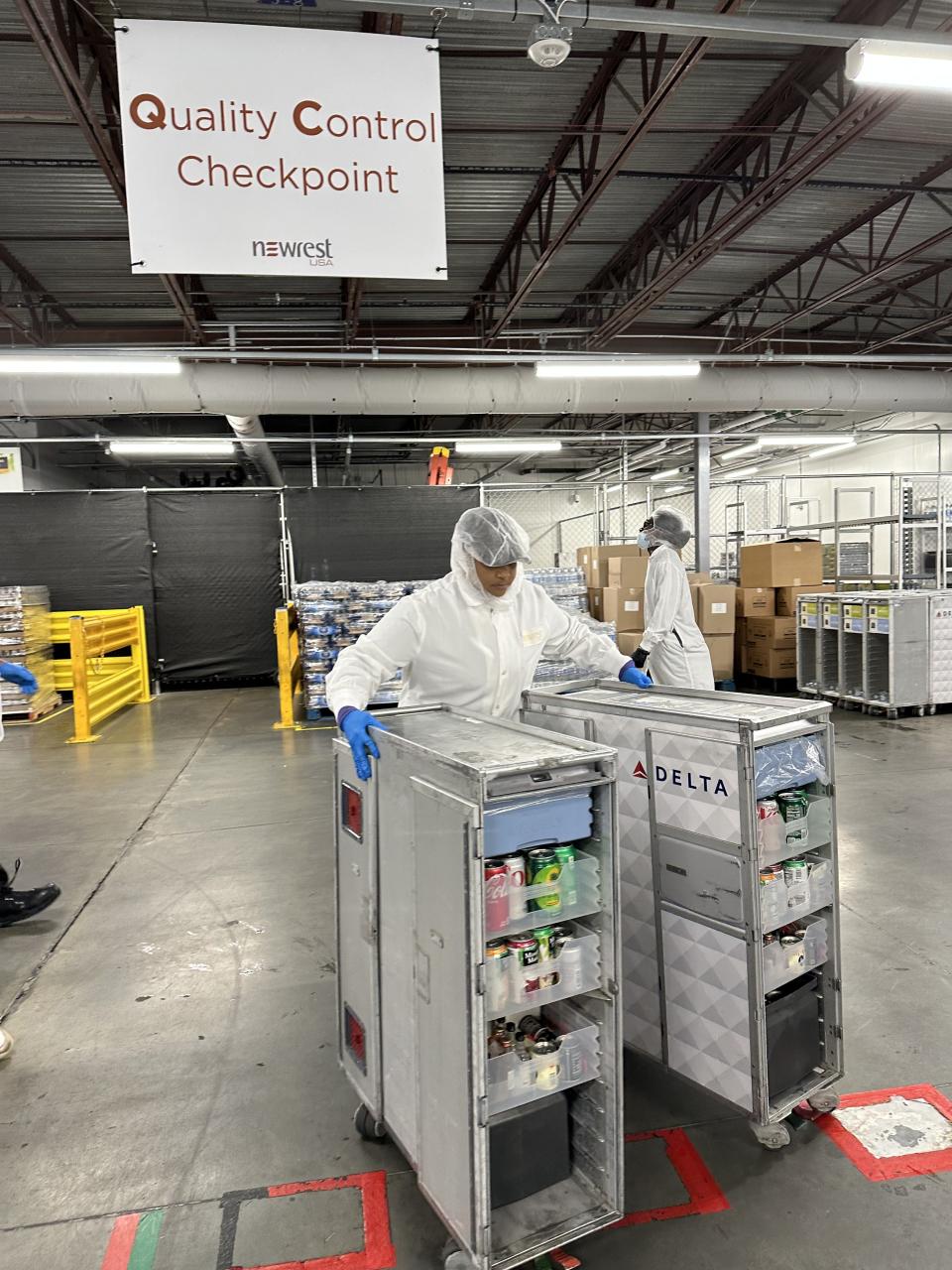
3. Preparing the actual food
On the food side, a huge team of workers prepares and plates meals with a little help from some mechanical colleagues.
According to Newrest, Delta’s domestic flight kitchen has 10 chefs working daily and 20 team members dedicated to meal plating at a time.
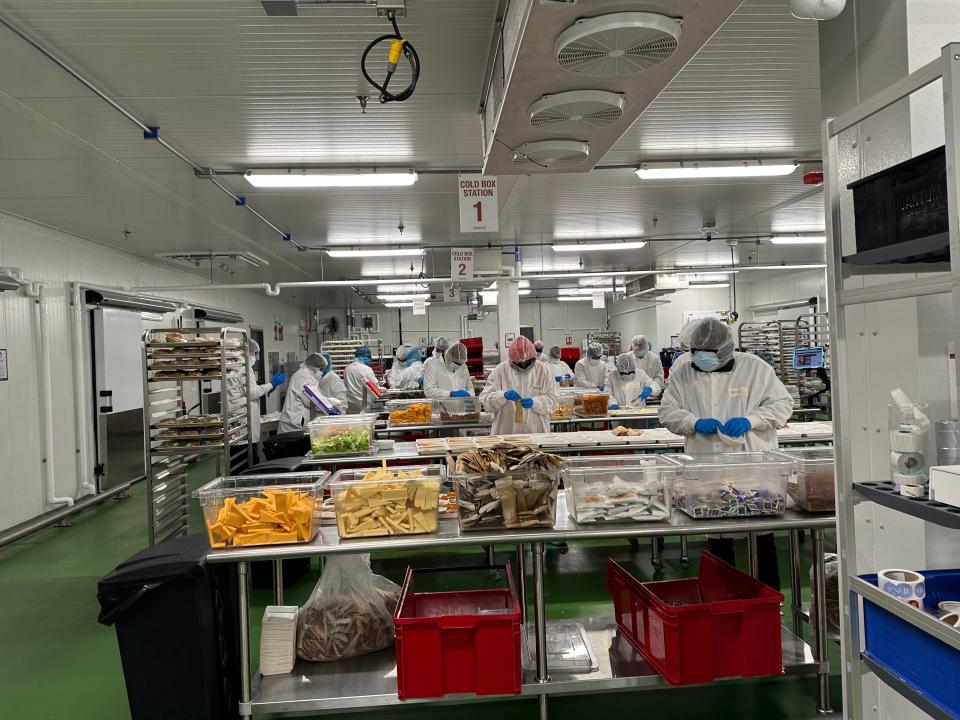
The first thing that happens in the food preparation assembly line is bringing in raw ingredients. Produce is cleaned and chopped before being sent off to get cooked or incorporated into a salad or platter. All fresh ingredients are served the same day or at most the day after they arrive on Delta’s property.
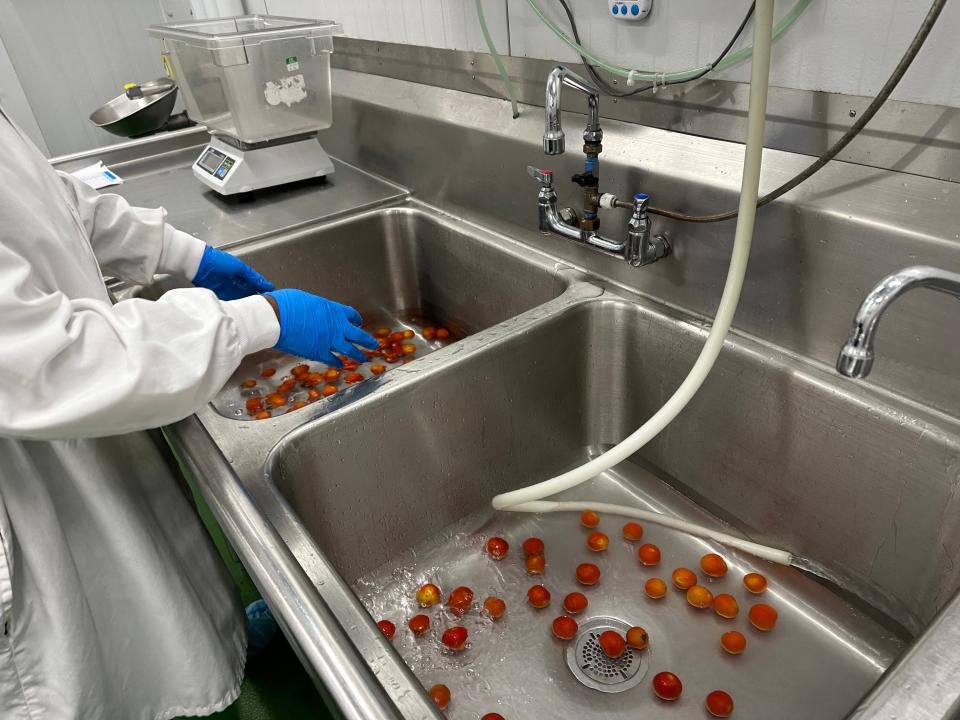
Hot food is cooked in high-tech ovens that help ensure consistent temperatures across a large volume of food. Pasta is also prepared in a special boiler. After being cooked, all hot ingredients are quickly chilled so they don’t get overdone, and then they are sent off to get plated. Hot meals are kept cold for transportation and are reheated in special ovens onboard.
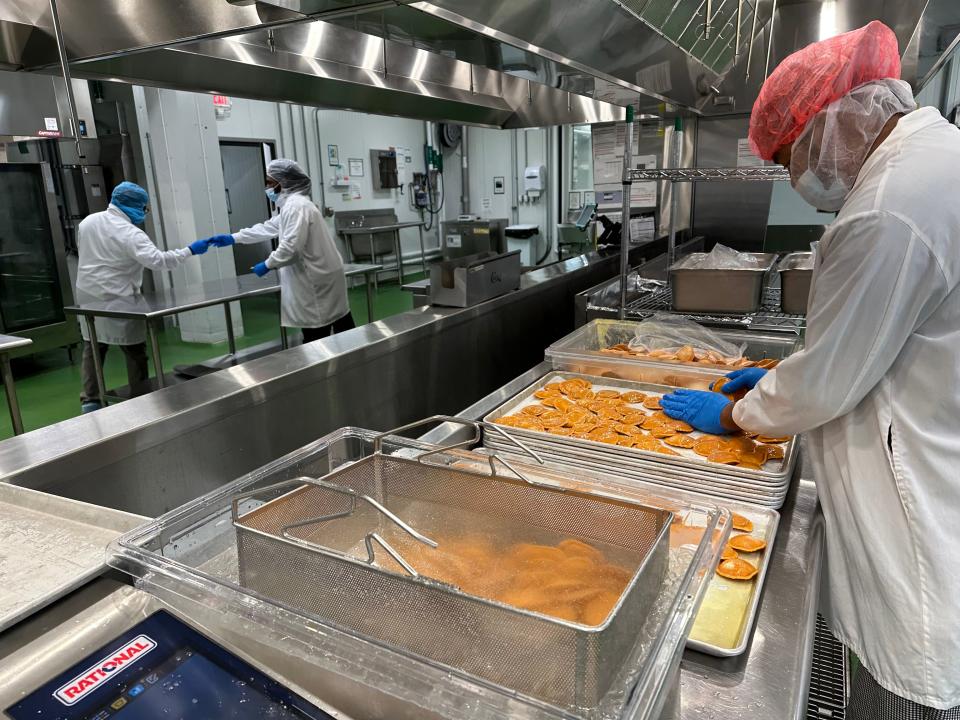
In the plating room, teams of people work together to get meals assembled consistently. Devices like calibrated scoopers help ensure every tray has more or less the same amount of food so no one is left feeling hungry or cheated.
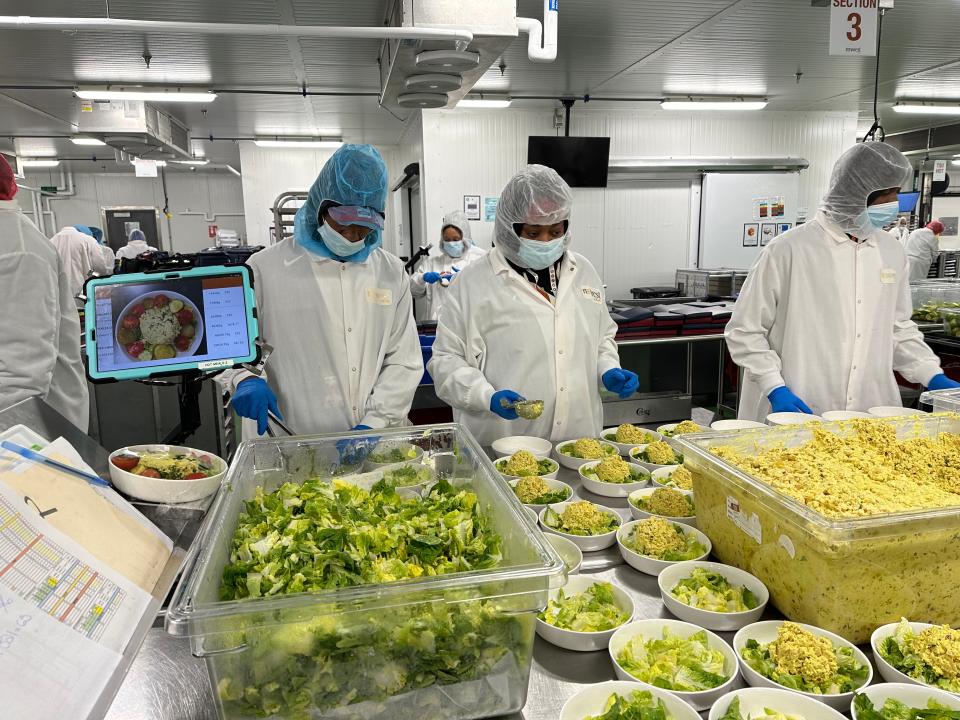
A huge assembly line-style robot also helps make sure every inflight meal is presented consistently. It puts the components like sides, desserts and salt packets in the exact same spot on every tray before a human employee adds the finishing touches, including cutlery and the entree.
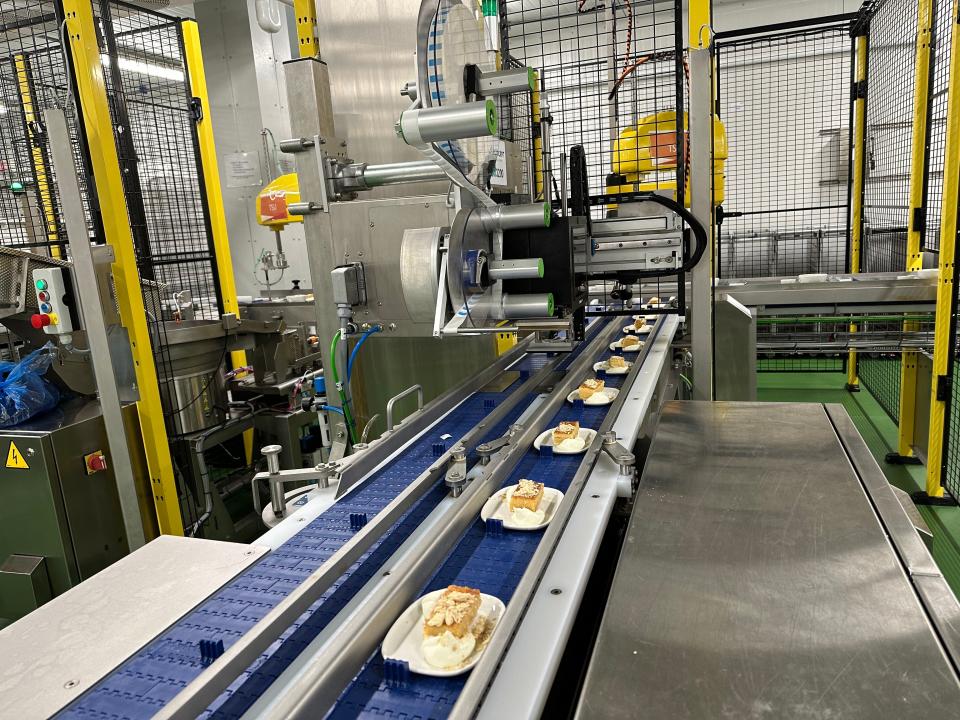
After all that is done, the carts can be fully assembled and loaded onto catering trucks to be sent to their assigned flights.
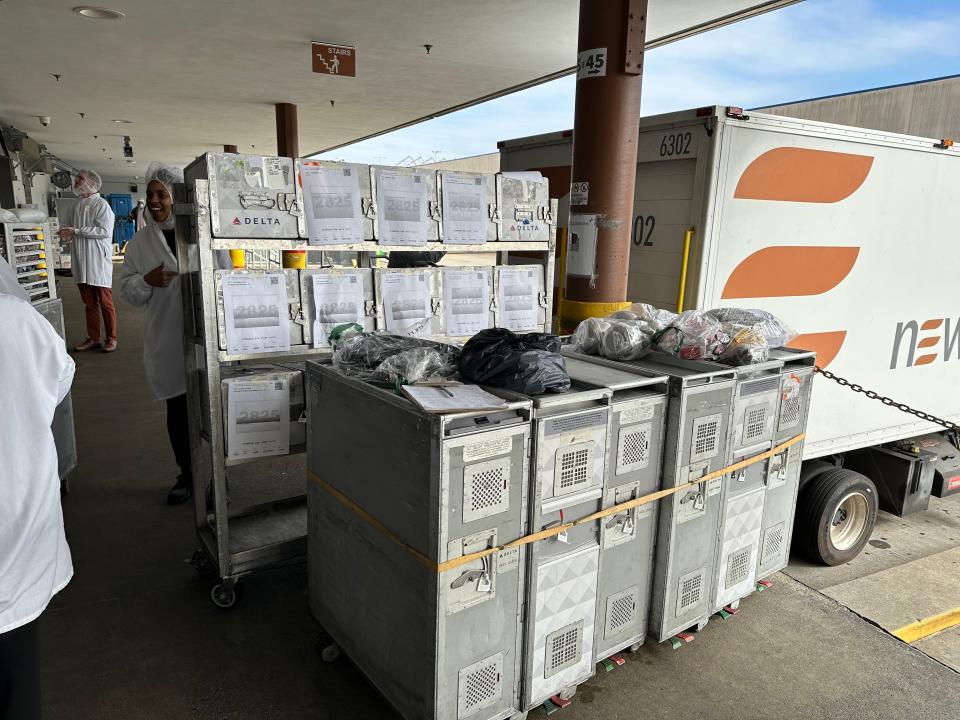
I’m not really sure what I was expecting out of an airline catering kitchen, but I came away with an appreciation for the operation’s efficiency. It takes a huge effort to get flights provisioned and ready to go, and as a traveler, it can be easy to forget how much work is happening behind the scenes to make your trips smooth and delicious.
Zach Wichter is a travel reporter for USA TODAY based in New York. You can reach him at zwichter@usatoday.com
This article originally appeared on USA TODAY: Chicken or beef? How airplane meals come together | Cruising Altitude

